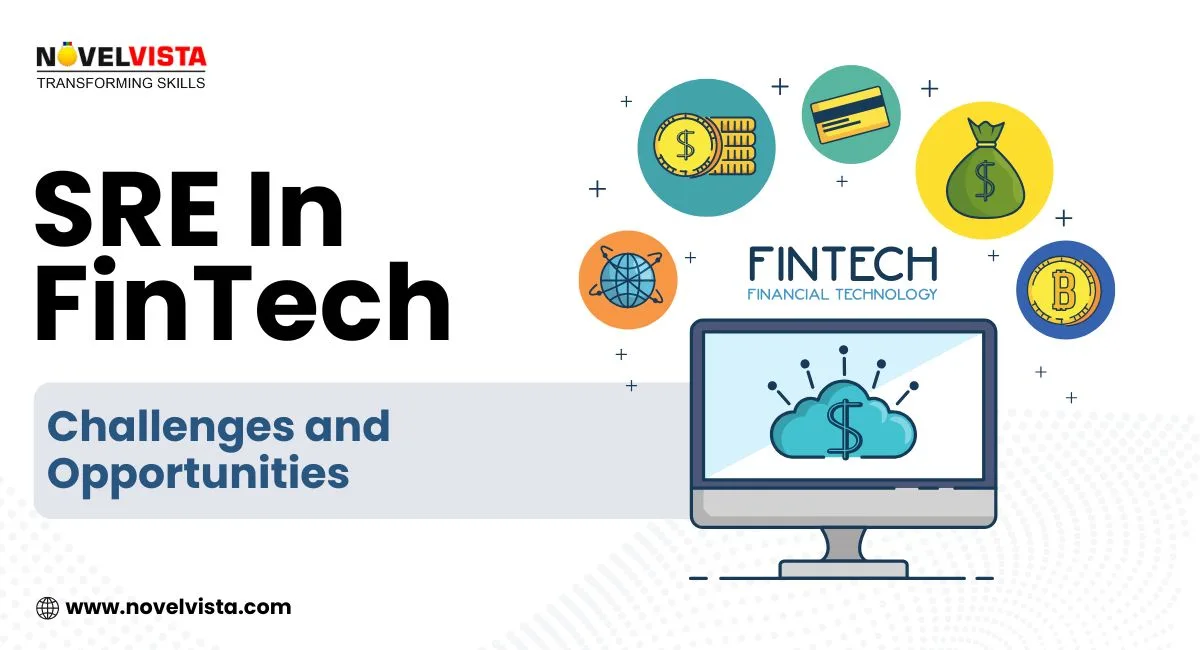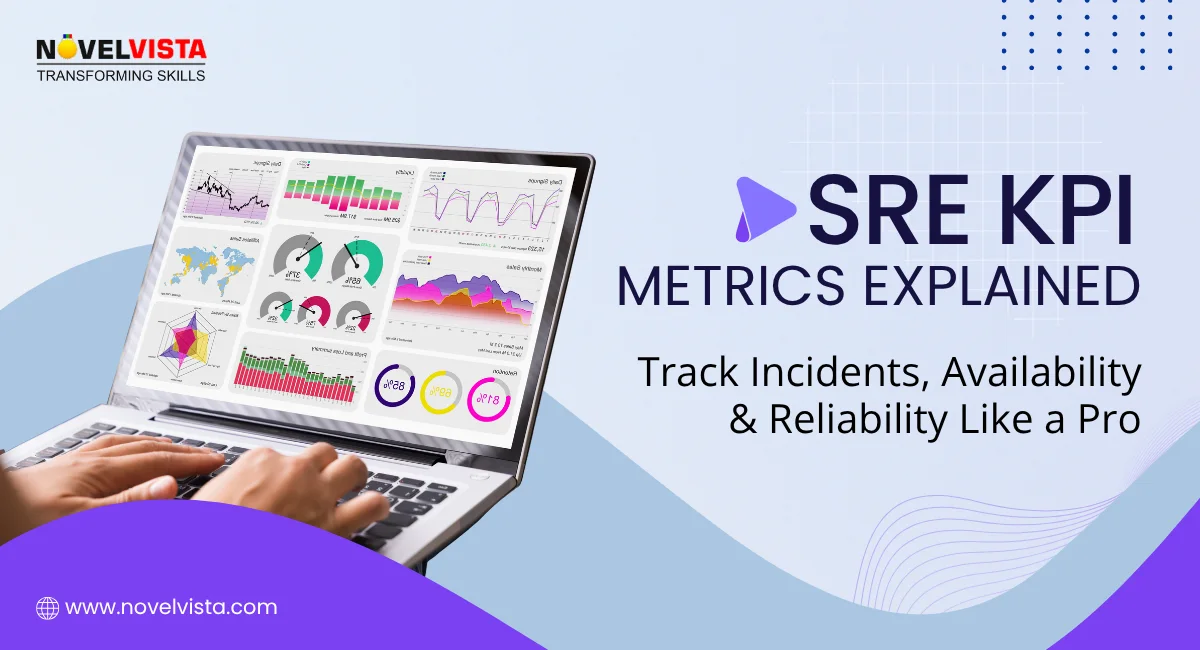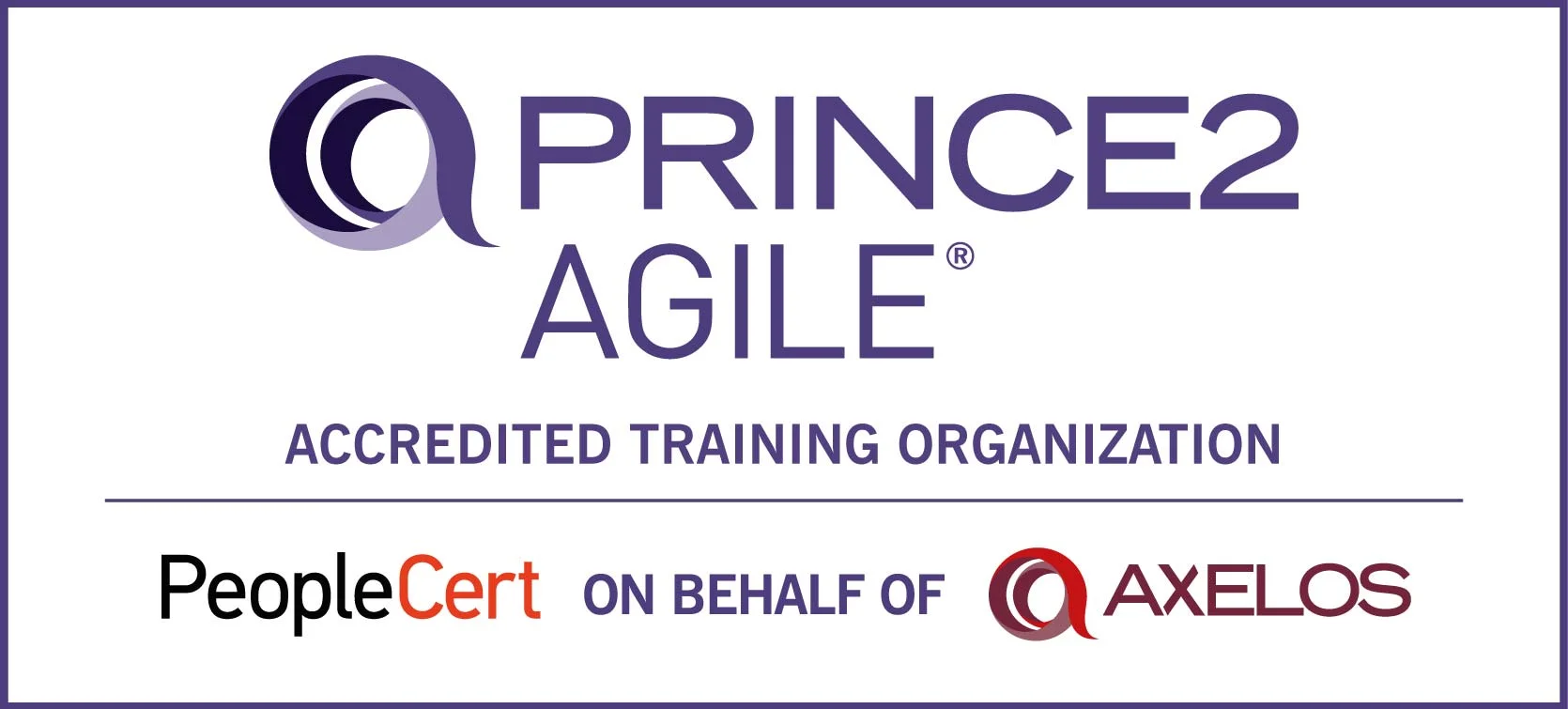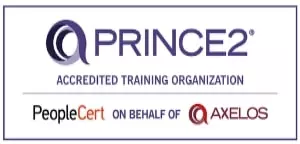- Understanding the Importance of Site Reliability Engineering in FinOps
- Challenges Faced in Implementing SRE in the FinTech Industry
- Strategies for Overcoming SRE Challenges in FinTech
- Best Practices for Successful SRE Implementation in FinOps
- Tools and Technologies for SRE in FinTech
- The Role of Automation in SRE for FinOps
- Future Trends and Opportunities in SRE for FinOps
- Navigating the Dynamic Landscape of SRE in FinTech
In FinTech, where every second counts and reliability is paramount, SRE serves as the guardian of system resilience and customer trust.
Site Reliability Engineering (SRE) is now a vital part of Financial Technology (FinTech). It improves reliability, scalability, and performance for critical financial systems.
As FinTech grows and creates new things, it faces unique challenges. It needs a strong, secure, and highly available technological infrastructure.
Today, transactions happen in real time. Sensitive data must be protected. SRE training is very important. Financial institutions and FinTech companies must protect customers' assets and personal information.
They must also ensure uninterrupted service availability. A brief system outage or security breach could mean big financial losses. It could also mean regulatory penalties and loss of customer trust.
SRE methods allow finance companies to create tough systems. They deal with many transactions, give real-time insights, and keep money data safe. SRE combines coding with operations. It connects development and production. SRE encourages teamwork, automation, and careful watching.
But, putting SRE in finance has obstacles. Finance systems are complex. Rules are strict. Tech changes fast. Systems must multiply. We look at the challenges finance firms face with SRE.
We look into tactics and smart ways to beat these problems, stressing how automation, full monitoring, and a team focused on security help.
The finance world keeps going digital. SRE rules help FinTech firms stay ahead. Nailing SRE for FinOps means boosted trust, smoother workflow, and reliable service - keys to winning in ever-changing fintech.
Understanding the Importance of Site Reliability Engineering in FinOps
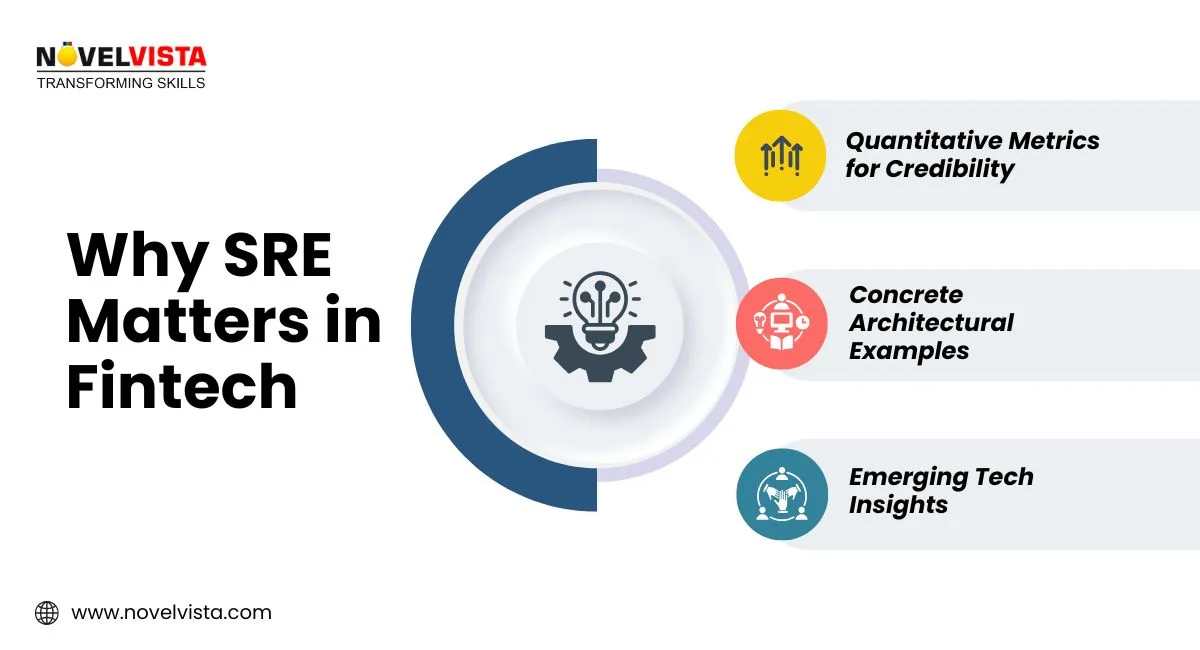
Site Reliability Engineering (SRE) is essential in the FinTech industry, which demands high levels of availability, performance, and security. In a sector where digital transactions are the norm, a robust Site Reliability Engineering in Finance is critical to maintaining uptime and service quality.
1. Quantitative Metrics for Credibility:
- Key metrics like Service Level Indicators (SLIs), Service Level Objectives (SLOs), and Service Level Agreements (SLAs) track performance such as uptime, latency, and error rates.
- These metrics help demonstrate how well SRE is performing, reduce downtime, and ensure transparency to stakeholders.
2. Concrete Architectural Examples:
- Auto-scaling designs are crucial for cloud-based infrastructures, as they ensure resources scale dynamically based on demand. This helps prevent outages during high traffic periods and ensures continuous availability.
3. Emerging Tech Insights:
- AI/ML can aid in predictive Incident response in FinTech detection, allowing teams to act proactively.
- Blockchain enhances immutable incident logs and secure audit trails, which are critical for maintaining security and meeting regulatory compliance standards in FinTech infrastructure reliability.
Challenges Faced in Implementing SRE in the FinTech Industry
SRE offers many advantages for the FinTech sector, yet its execution presents obstacles. A major hurdle is the intricate nature of FinTech systems.
These financial applications often contain multiple interconnected parts, including payment gateways, trading platforms, and risk management systems. Ensuring these components work together seamlessly and reliably can prove daunting.
Moreover, FinTech companies must comply with strict regulations and data privacy laws, adding complexity to SRE implementation. Striking a balance between agility, innovation, security, and compliance requirements demands a delicate, challenging approach.
The fast growth of FinTech brings tricky scaling problems. Companies get more customers and new services.
So systems must handle bigger loads and adjust to changing market conditions. Growing FinTech infrastructure reliability while staying reliable as demand explodes is a huge hurdle for SRE teams in FinTech companies.
Strategies for Overcoming SRE Challenges in FinTech
As the famous saying goes, 'Prevention is better than cure. This adage rings true for SRE in FinTech, where proactive monitoring and automation can prevent costly outages and security breaches.
To prevent issues when using SRE in FinTech, companies should take steps beforehand. Acting proactively is essential.
These tactics may assist in handling the ever-changing SRE landscape for FinOps:
- Strongly consider investing in detailed monitoring and observability tools. Having the ability to notice and fix problems quickly is vital. Being able to watch system performance closely, combined with getting warnings ahead of time, allows FinTech firms to respond rapidly to possible issues. This ensures services continue smoothly.
- Companies need to embrace automation to grow and stay reliable. They should automate tasks like setting up systems, applying updates, and managing settings. Doing so reduces human mistakes and boosts efficiency. Using practices like infrastructure-as-code and tools such as Kubernetes and Ansible automates key SRE aspects in FinOps.
- Security and following rules are vital in FinTech. Using encryption, access controls, and secure coding protects financial data. Closely working with compliance teams and keeping up with changing rules helps SRE in FinTech succeed. There's no compromise on this.
Best Practices for Successful SRE Implementation in FinOps
Implementing SRE best practices for FinTech helps maintain a balance between rapid development and operational stability.
Toolchains and Team Structures That Scale
1. Toolchain Recommendations:
- Monitoring: Tools like Prometheus and Grafana enable efficient metrics collection and visualization.
- Alerting: Platforms such as PagerDuty and OpsGenie ensure that incidents are swiftly addressed.
- IaC (Infrastructure as Code): Tools like Terraform and Ansible automate infrastructure deployment, promoting consistency and reducing human error.
2. Team Structures:
Governance models should align with the organization’s size and workflow. Considerations include:
- SRE Lead vs. Embedded SREs: Decide between a central SRE team or distributed, embedded teams.
- Alignment with DevOps or Agile: Ensure that SRE teams work in tandem with DevOps in FinTech and Agile methodologies to maintain operational efficiency and flexibility.
Security & Compliance: DevSecOps in Fintech SRE
Security and compliance are non-negotiable in FinTech, and DevSecOps is the ideal approach to embedding security within the SRE framework.
- IaC Security Practices: Tools like Checkov and tfsec help identify and address vulnerabilities in infrastructure code.
- CI/CD Security Testing: Implement SAST (Static Application Security Testing) and DAST (Dynamic Application Security Testing) tools to identify security flaws throughout the development pipeline.
- Regulatory Compliance Integration: PCI DSS and SOC 2 Automation ensure that your systems comply with industry standards and regulations, helping mitigate risks associated with regulatory violations.
Get Your Free Copy
FinTech-Specific SRE Metrics That Work
Tools and Technologies for SRE in FinTech
Multiple options exist when implementing SRE practices for FinTech firms. Some key tools and technologies are:
- Monitoring tools give real-time system insights. Examples include Prometheus, Grafana, New Relic. These enable proactive monitoring to quickly resolve issues.
- Infrastructure-as-Code solutions automate infrastructure setup and configuration management. Terraform and Ansible help ensure consistency and scalability across environments.
- Containerization platforms like Kubernetes and Docker allow applications to run in isolated containers. This improves scalability and reliability when deploying software.
The Role of Automation in SRE for FinOps
Automating tasks is crucial for SRE in FinOps. It frees up resources by handling repetitive work.
Automating reduces human errors and improves efficiency. Automation enables scaling infrastructure rapidly to meet increasing demand. This ensures high availability and reliability.
Automation applies to various SRE aspects in FinOps. This includes provisioning infrastructure, deployment pipelines, managing configurations, and responding to incidents. FinTech companies adopt FinTech infrastructure reliability-as-code practices.
They use tools like Ansible, Jenkins, and GitLab CI/CD. This allows the automation of critical processes consistently across environments.
Future Trends and Opportunities in SRE for FinOps
SRE in FinTech offers various opportunities to improve operational efficiency, scalability, and system reliability
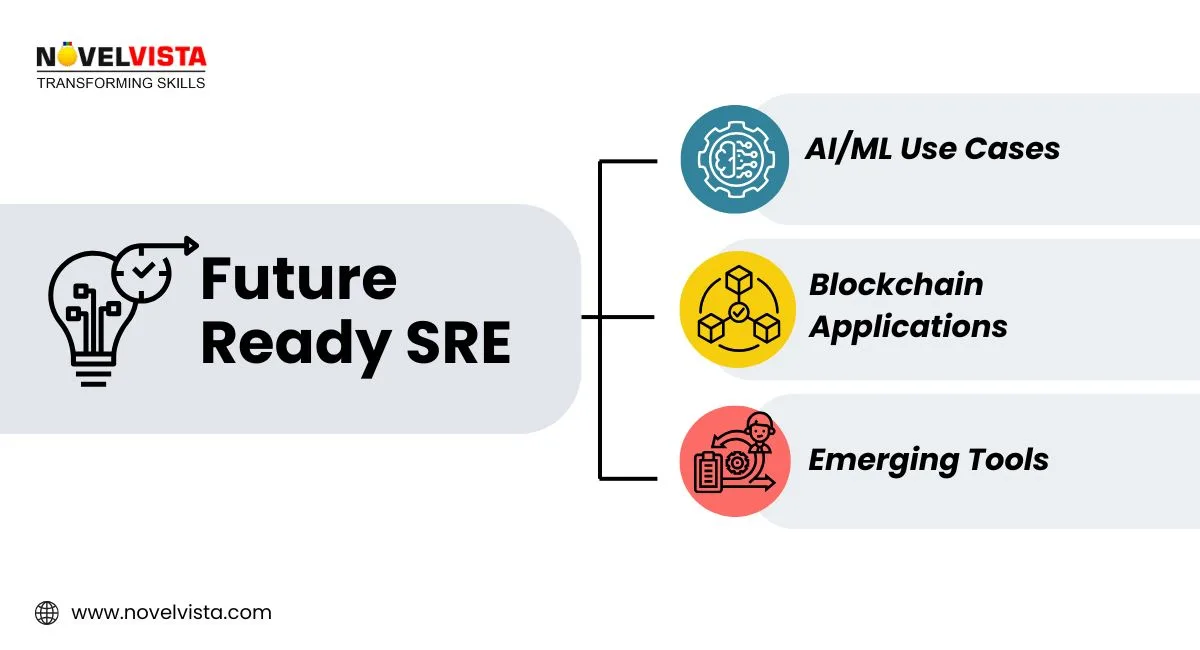
1. AI/ML Use Cases:
- Predictive Incident Detection: AI and ML can predict system failures before they happen, helping teams mitigate issues proactively.
- Intelligent Alert Suppression: AI models can filter out low-priority alerts, allowing teams to focus on critical issues.
2. Blockchain Applications:
- Immutable Incident Logs: Blockchain's secure ledger provides tamper-proof records of system events, ensuring transparency and reliability.
- Secure Audit Trails: Blockchain enables traceable and verifiable logs, crucial for maintaining compliance in the regulated FinTech infrastructure reliability sector.
3. Emerging Tools:
- Dynatrace Davis: An AI-powered tool that helps optimize system performance.
- AIOps: Combines machine learning and big data analytics to automate incident management and problem resolution.
- Chainlink: A decentralized oracle network that provides real-world data to smart contracts, enhancing reliability and security in DevOps in FinTech.
Frequently Asked Questions
Author Details

Akshad Modi
AI Architect
An AI Architect plays a crucial role in designing scalable AI solutions, integrating machine learning and advanced technologies to solve business challenges and drive innovation in digital transformation strategies.
Confused About Certification?
Get Free Consultation Call

